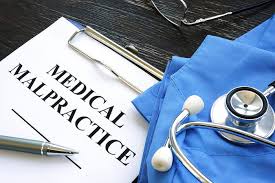Medical malpractice is often a misunderstood area of law that deals with the negligence of healthcare providers in delivering proper medical care to patients. It leads to serious injuries or even fatalities, leading to significant emotional and financial distress for victims and their families. Despite common beliefs, not all adverse medical outcomes constitute malpractice, and misconceptions can hinder the ability of those affected to seek justice. This article aims to clarify some of the prevalent myths and facts surrounding medical malpractice, providing essential insights for those considering legal action, including guidance on how Paramus malpractice lawyers can assist in navigating this challenging legal landscape.
Common Myths About Medical Malpractice
One prevalent myth surrounding medical malpractice is that any negative outcome from a medical procedure equates to malpractice. Not every adverse result signifies negligence; medical professionals can decide based on available information, yet patients may still experience complications or poor outcomes. Another misconception is that malpractice cases are primarily initiated for monetary gain when, in fact, many victims seek accountability and justice for the harm they’ve suffered. However, studies show that the actual number of malpractice claims is relatively low compared to the overall volume of medical procedures performed, and it’s essential to recognize that valid claims can help address systemic issues within the healthcare system.
Key Facts About Medical Malpractice
Medical malpractice is a complex issue that encompasses various aspects of healthcare delivery. One fact is that the legal definition of malpractice often requires a demonstration of negligence, meaning that medical professionals must have failed to meet the accepted standard of care in their field. Data indicates that a significant proportion of these claims involve genuine patient harm, with studies suggesting that as many as 250,000 deaths annually in the United States may result from medical errors, making it a leading cause of mortality. Understanding these realities helps clarify why medical malpractice cases are pursued and highlights the need for ongoing reforms to improve patient safety.
Types of Medical Malpractice
Medical malpractice can manifest in various forms, each stemming from different types of negligent behavior by healthcare providers. Among the most common is surgical malpractice, which can occur when a surgeon operates on the wrong body part, leaves surgical instruments inside a patient, or fails to follow proper protocols during a procedure. Another frequent type is diagnostic error, where a healthcare professional misdiagnoses or fails to diagnose a condition, leading to inappropriate or delayed treatment. Lastly, birth injuries can arise from negligence during childbirth, potentially resulting in permanent damage to the baby or mother. Each type of medical malpractice underscores the critical importance of adherence to established medical standards and protocols to safeguard patient well-being.
The Role of Medical Professionals in Malpractice Cases
Medical professionals play a pivotal role in preventing and resolving malpractice cases. Their adherence to established standards of care can minimize the risk of negligence, as consistent application of best practices can significantly reduce the likelihood of errors that lead to patient harm. In the event of a malpractice claim, these professionals may find themselves as key witnesses or defendants, providing expert testimony regarding their decisions and actions. The ability of medical professionals to communicate effectively with patients, document procedures accurately, and engage in continuous education also influences the outcomes of such cases, as thorough documentation and a solid understanding of current medical practices can protect against malpractice claims.
Legal Process of Medical Malpractice Claims
The legal process of medical malpractice claims typically begins with the patient or their representative filing a complaint against the healthcare provider, alleging negligence that resulted in harm. The initial phase involves gathering evidence, including medical records, expert testimonies, and other documentation, to establish that the standard of care was unmet. Following this, both parties may negotiate to settle; however, the case may proceed to trial if an agreement cannot be reached. Throughout this process, victims should seek guidance from experienced professionals who can navigate the complexities of the legal system, ensuring that the claim is appropriately handled and that the rights of the affected parties are protected.
Consequences of Medical Malpractice
The legal process of medical malpractice claims typically begins with the patient or their representative filing a complaint against the healthcare provider, alleging negligence that resulted in harm. The initial phase involves gathering evidence to establish that the standard of care was unmet. Following this, both parties may negotiate to settle; however, the case may proceed to trial if an agreement cannot be reached. Throughout this process, victims should seek guidance from experienced professionals, such as Paramus malpractice lawyers, who can navigate the legal system, ensuring that the claim is appropriately handled and the rights are protected.
Final Thoughts
In conclusion, understanding the intricacies of medical malpractice is vital for patients and healthcare providers. Individuals can better navigate this complex landscape with a clear grasp of the myths surrounding malpractice, the types of claims that may arise, and medical professionals’ roles in preventing adverse outcomes. Malpractice victims must seek proper legal representation from Paramus malpractice lawyers to uphold their rights and contribute to a system prioritizing patient safety and accountability. Ultimately, continued reforms and education within the healthcare system can help mitigate errors and promote better health outcomes for all.

